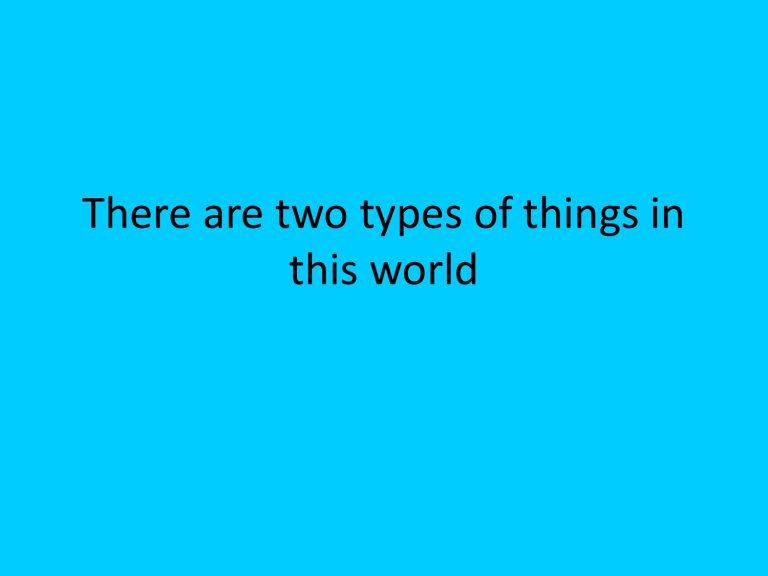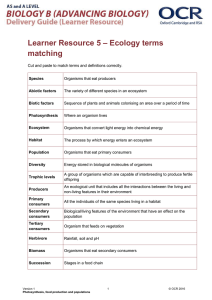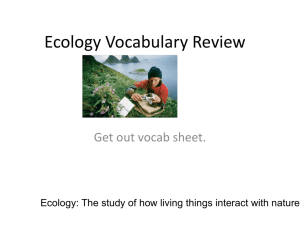
There are two types of things in this world Living Non-living Living Biotic Non-living Abiotic Organism • A living thing OR • A biotic factor Individual A single organism in an environment Population Individual A single organism in an environment Individuals of the same kind in the same environment Community Population Individual A single organism in an environment Individuals of the same kind in the same environment All populations of organisms living together in an environment Ecosystem AKA Habitat Community Population Individual A single organism in an environment Individuals of the same kind in the same environment All populations of organisms living together in an environment A community and its environment Food Chains What is a food chain? • Food chains are how energy is passed through communities. All energy comes from the….. Producers • Use sunlight to produce their own energy Photosynthesis: - The process through which producers create their own energy from Carbon Dioxide and Water. Consumers • Organisms that must eat to get the energy needed. Consumers Primary Consumers: eat plants or parts of plants to survive. Consumers Secondary Consumers: eat other animals (which have already consumed plants). Consumers Primary Consumers: eat plants or parts of plants to survive. Secondary Consumers: eat other animals (which have already consumed plants). Tertiary Consumers: predators that eat other predators. Consumers • Predators are animals that eat other animals. • Prey are the animals eaten. Decomposers • Consumers that break down the tissues of dead organisms into simpler forms of matter. Producer or Consumer? Lizard Producer or Consumer? Cactus Fill in the blank In an ecosystem, are there more producers or consumers? Food Web • The relationship between multiple food chains in a single ecosystem. • Has many producers and consumers. Energy Pyramid • Shows amount of energy available in each level of an ecosystem • The higher on the pyramid, the less energy available. What is a competition? What types of competitions do you participate in? Competition (in ecosystems) • The contest among organisms for the limited resources of an ecosystem. Animals and plants have to share the same resources. • Deer compete with each other for food. • Plants in the desert compete with each other for water. Adaptations • The process of meeting needs for survival. • A special feature that helps an organism survive. • Adaptations help an organism compete! Limiting Factors Activity An ecosystem needs a certain amount of resources for wildlife to survive. Limiting Factor • A resource or environmental factor that is in short supply so organisms in the environment have to compete for them. This limits the number of organisms using that resource that can survive in an area. L i m i t i n g F a c t o r s Other relationships between Organisms: • Symbiosis – long-term relationship between different kinds of organisms. • May benefit one OR both organisms! Symbiosis • Mutualism – both organisms benefit http://www.youtube.com/watch?v=eWXOurnVTYg Symbiosis • Parasitism – one organism benefits while the other suffers Ecosystems • Remember, ecosystems are a community and its environment.





